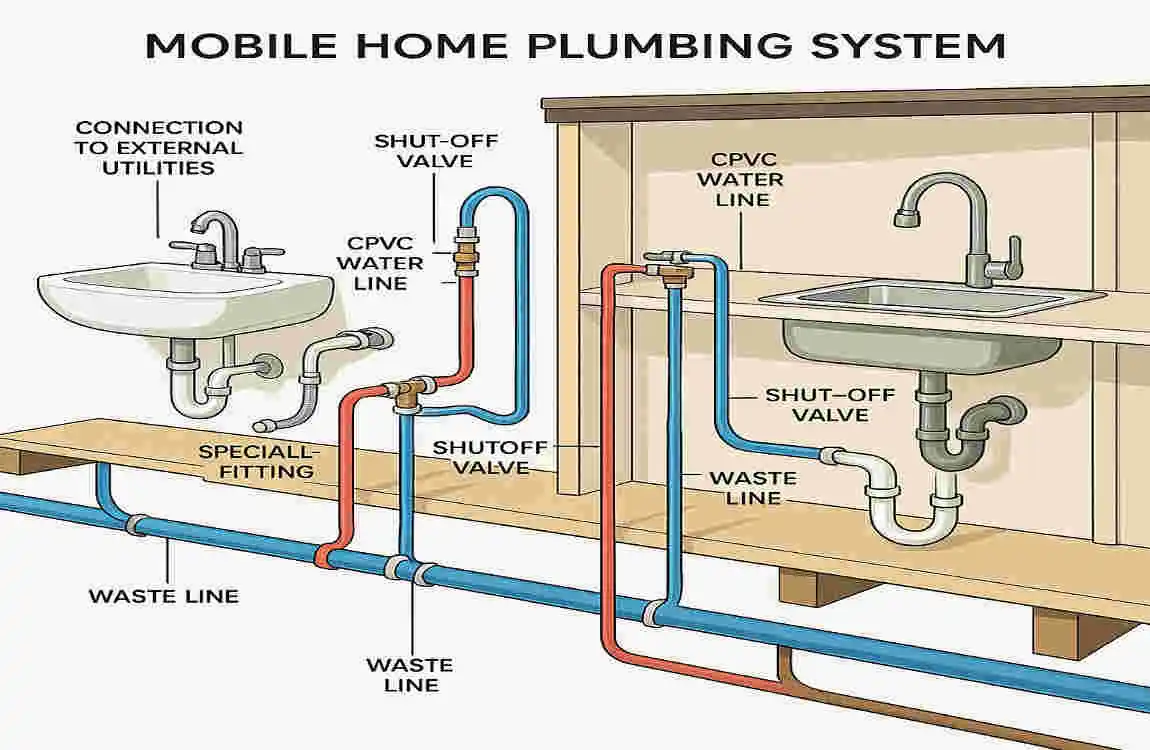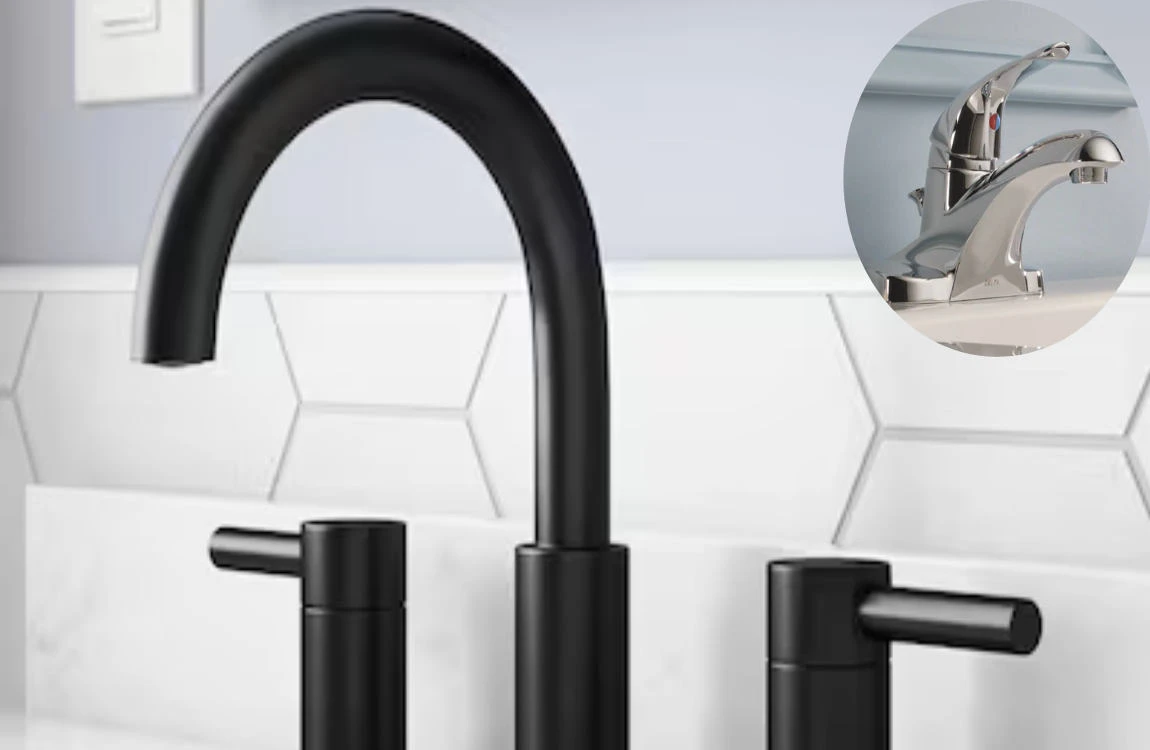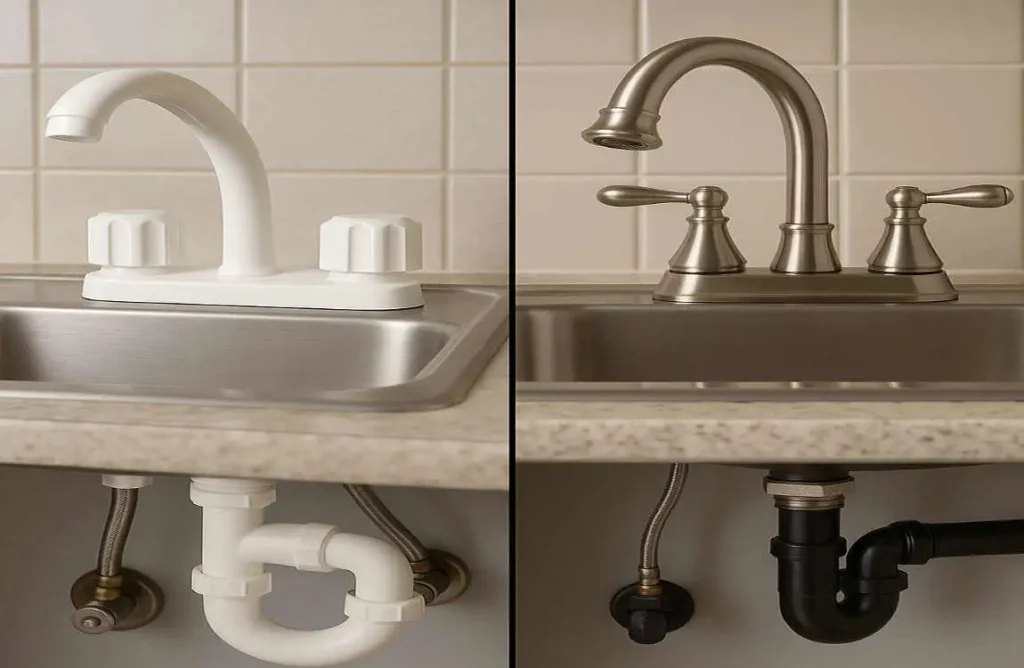Mobile home faucets differ from standard faucets primarily in their design and installation requirements, which are tailored to the unique plumbing setups of mobile homes. They often come in configurations like single-hole or three-hole installations that fit mobile home sinks and walls, which can be more compact and require adaptability to low water pressure.
Understanding the Plumbing System in Mobile Homes

Mobile homes have distinct plumbing systems that differ from traditional houses. They often use a network of flexible pipes, which can be easier to install and access.
Many mobile homes feature PVC or PEX piping, known for their durability and resistance to corrosion. This is crucial in maintaining water quality over time.
The layout of the plumbing system is designed for efficiency within a limited space. It typically has fewer bends and turns than standard home plumbing, reducing the chances of leaks.
Water supply lines are usually connected to a central distribution point, simplifying repairs and maintenance.
Understanding these differences helps homeowners make informed decisions about upgrades or repairs for faucets and fixtures in mobile spaces. Proper knowledge ensures you choose compatible parts that fit seamlessly into your unique setup.
Types of Mobile Home Faucets
Mobile home faucets come in various types, each designed for specific needs and aesthetic preferences.
One common type is the single-handle faucet. This design allows users to control both water temperature and flow with one hand, making it convenient for busy kitchens or bathrooms.
You may also read (how to fix a leaking plumbing stack in your home).
Then there’s the double-handle faucet. It separates hot and cold water controls, offering precise adjustments for those who enjoy a more traditional look.
Another option is the pull-down sprayer faucet. Ideal for washing dishes or rinsing produce, this versatile choice adds functionality without sacrificing style.
Wall-mounted faucets are also widespread in mobile homes where space is limited. They save counter space while providing a sleek appearance.
You’ll find specialized options like bar sinks or utility faucets tailored for specific tasks around your home. Each type enhances usability while catering to unique tastes and requirements.
Differences between Mobile Home Faucets and Regular Faucets

Mobile home faucets are designed with unique specifications. They typically have a compact design to fit the smaller plumbing systems found in mobile homes. This means they often come in standard sizes that differ from regular faucets.
Another key difference is the materials used. Mobile home faucets may use more lightweight materials, making them easier to install and replace, while regular faucets often utilize heavier metals for durability.
Water pressure is another factor; mobile home systems often operate under lower pressure compared to standard household setups. Therefore, some fixtures might perform differently based on these conditions.
Aesthetics may vary significantly as well. Regular faucets offer a broader range of styles and finishes suitable for diverse kitchen or bathroom designs compared to their mobile counterparts.
Factors to Consider When Choosing a Mobile Home Faucet
When choosing a mobile home faucet, consider the size and configuration of your sink. Mobile homes often have more compact spaces, so a faucet that fits well is essential.
Material matters too. Stainless steel offers durability, while plastic can be lightweight and affordable. Think about what best suits your needs.
Water pressure is another factor to keep in mind. Some faucets perform better under lower water pressure, which may be common in mobile homes.
Don’t overlook style! A cohesive look enhances the appeal of your space, whether you prefer modern or traditional designs.
Check for compatibility with existing plumbing systems. Ensuring seamless installation will save time and headaches later on.
Installation Process and Maintenance Tips
Installing a mobile home faucet can be straightforward if you follow the proper steps. Start by turning off your water supply to avoid any spills. Next, carefully remove the old faucet; this typically involves unscrewing it from underneath the sink.
Before installing the new faucet, ensure that all connections are clean and free of debris. This will help create a better seal and prevent leaks in the future. When attaching the new unit, follow the manufacturer’s instructions closely for optimal results.
Maintenance is key to keeping your faucet in good condition. Regularly check for leaks around fittings and hoses. A simple tightening often does wonders.
Clean your faucets regularly using gentle cleansers to prevent buildup and maintain their shine. Avoid abrasive materials that can scratch finishes or damage seals over time. Taking these simple steps ensures longevity and functionality in your mobile home’s plumbing system.
You may also read (rerouting house plumbing essential tips and techniques).
